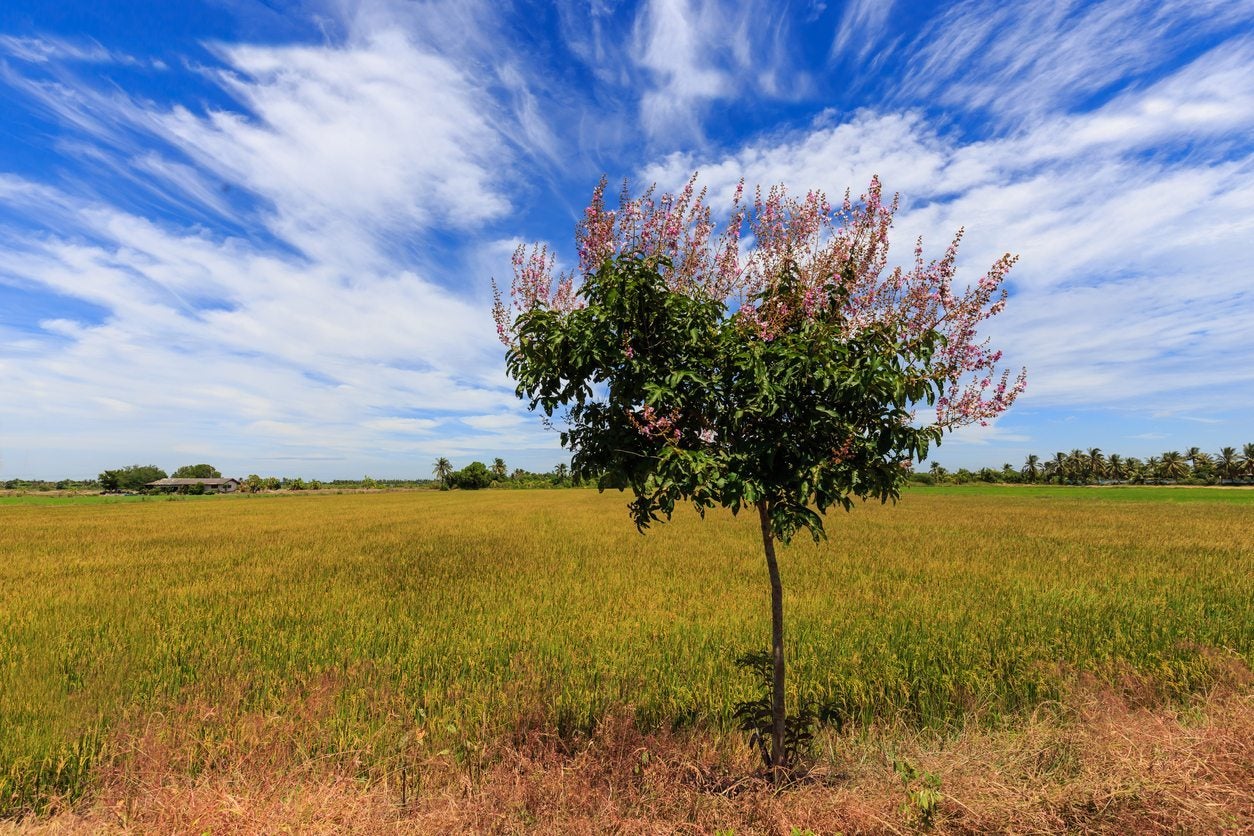Crepe Myrtle Transplanting: When And How To Transplant Crepe Myrtle Trees


With long-lasting, beautiful blooms, easy-care crepe myrtle is a garden favorite. Sometimes spelled "crape" myrtle, it is an ideal landscape tree for the high desert and a lovely ornamental in any backyard.
If your mature crepe myrtle needs to be transplanted, it’s critical to be on top of the procedure. When to transplant crepe myrtle? How to transplant crepe myrtle? Read on for all the information you need to make transplanting a crepe myrtle a snap.
Moving Crepe Myrtles
If you plant a tree, you hope to put in in a “forever” location, where it can live out its life comfortably and in harmony with its surroundings. But life happens all around us, and sometimes these plans don’t work out. If you planted your crepe myrtles in a spot you now regret, you aren’t the only one.
Crepe myrtles flower best in sun. Perhaps you chose a sunny site but now neighboring trees are throwing shade on the area. Or maybe the crepe myrtle just needs more space.
Crepe myrtle transplanting involves essentially three steps. These are: digging a hole in an appropriate new site, digging out the rootball, and transplanting a crepe myrtle in the new spot.
When to Transplant Crepe Myrtle
Before you get starting digging, you’ll want to figure out when to transplant crepe myrtle. The best possible time to start moving crepe myrtle is when the tree is dormant.
That period runs from the time the tree loses its leaves to spring leaf break. Late winter is usually cited as the best time for crepe myrtle transplanting. You’ll need to wait until the soil is workable but act before the first leaves appear.
Sign up for the Gardening Know How newsletter today and receive a free copy of our e-book "How to Grow Delicious Tomatoes".
How to Transplant Crepe Myrtle
Crepe myrtle transplanting starts with selecting a new location for the tree. Think about its requirements then find the spot that works best. You’ll need a sunny location for best flowering, plus some elbow room for the tree.
Moving crepe myrtles requires a bit of digging. First, dig out a new planting hole. It has to be large enough to fit all of the tree’s current roots, but somewhat wider, to allow those roots to expand.
Next, you need to dig out the tree. The bigger your tree, the more friends you should invite to help. Dig around the outside of the roots, taking a root ball that is some 2 to 3 feet (.6-.9 m.) in diameter. This will ensure that the plant moves to its new location with sufficient roots to survive.
The next step in transplanting a crepe myrtle is to get the root ball out of the soil. With the help of your friends, lift the root ball onto a tarp. Then pull the tarp over to the new planting site and set the root ball in the hole.
During this stage of crepe myrtle transplanting, position the tree so that the top of the root ball is even with the soil surface. F
lood the root area with water. Keep watering regularly during the first few growing seasons at the new location.

Teo Spengler is a master gardener and a docent at the San Francisco Botanical Garden, where she hosts public tours. She has studied horticulture and written about nature, trees, plants, and gardening for more than two decades, following a career as an attorney and legal writer. Her extended family includes some 30 houseplants and hundreds of outdoor plants, including 250 trees, which are her main passion. Spengler currently splits her life between San Francisco and the French Basque Country, though she was raised in Alaska, giving her experience of gardening in a range of climates.